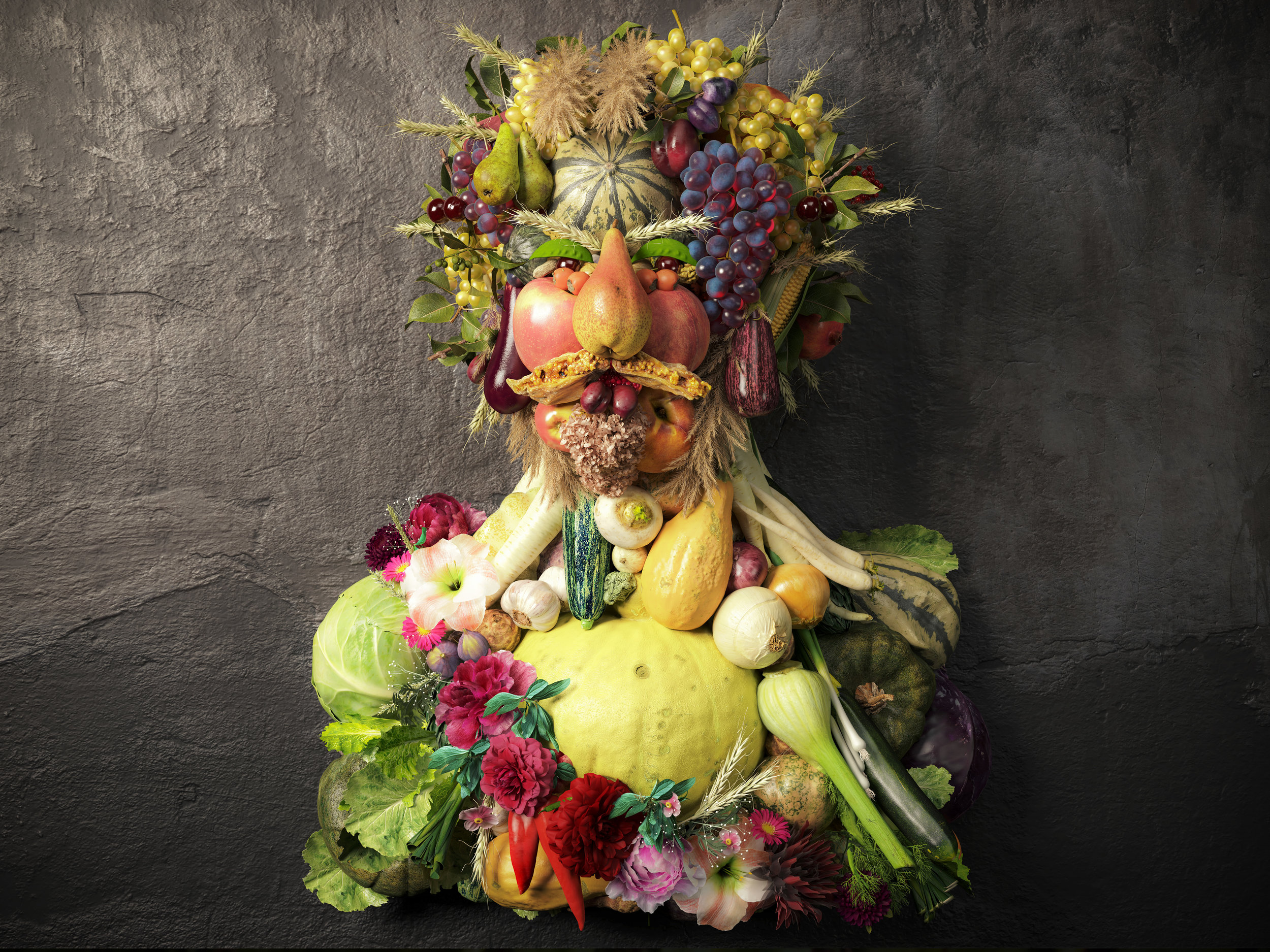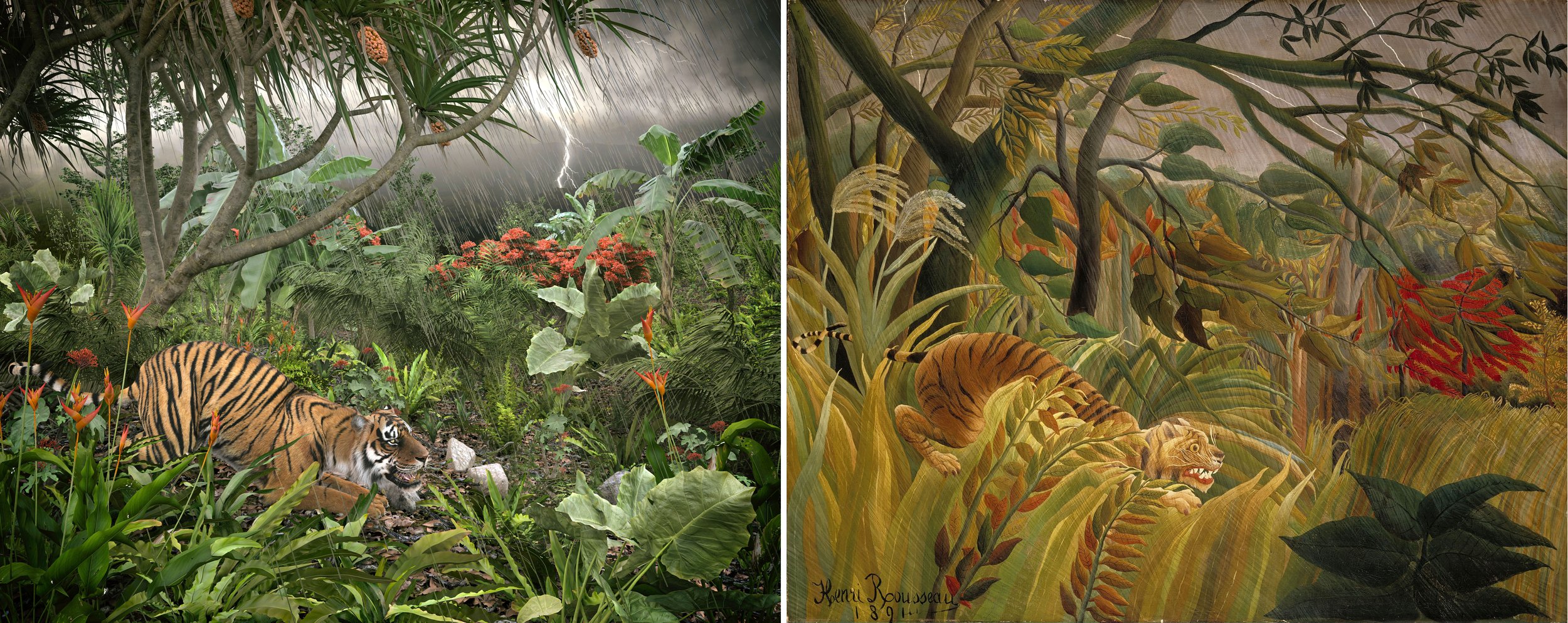






Vertumnus is a painting by Mannerist painter Giuseppe Arcimboldo produced in Milan c. 1590–1591. The painting is Arcimboldo's most famous work and is a portrait of the Holy Roman Emperor Rudolf II re-imagined as Vertumnus, the Roman god of metamorphoses in nature and life.
This is only meant as a fun project, created entirely using Evermotion Archmodels, interiors (https://evermotion.org/) and various models from 3DSky (https://3dsky.org/) and TurboSquid (https://www.turbosquid.com/)
Materials changed to blend accordingly, lighting, render and post production all done by myself.

3D AND PAINTED VERSIONS, SIDE BY SIDE
Vertumnus is a painting by Mannerist painter Giuseppe Arcimboldo produced in Milan c. 1590–1591. The painting is Arcimboldo's most famous work and is a portrait of the Holy Roman Emperor Rudolf II re-imagined as Vertumnus, the Roman god of metamorphoses in nature and life.
This is only meant as a fun project, created entirely using Evermotion Archmodels, interiors (https://evermotion.org/) and various models from 3DSky (https://3dsky.org/) and TurboSquid (https://www.turbosquid.com/)
Materials changed to blend accordingly, lighting, render and post production all done by myself.

Tiger in a Tropical Storm or Surprised! is an 1891 oil-on-canvas painting by Henri Rousseau. It was the first of the jungle paintings for which the artist is chiefly known. It shows a tiger, illuminated by a flash of lightning, preparing to pounce on its prey in the midst of a raging gale.
Unable to have a painting accepted by the jury of the Académie de peinture et de sculpture, or the Academy of Painting and Sculpture, Rousseau exhibited Tiger in a Tropical Storm in 1891 under the title Surpris!, at the Salon des Indépendants, which was unjuried and open to all artists. The painting received mixed reviews. Rousseau had been a late developer: his first known work, Landscape with a Windmill, was not produced until he was 35, and his work is marked by a naïveté of composition that belies its technical complexity.
This is only meant as a fun project, created entirely using Evermotion Archmodels, interiors (https://evermotion.org/) and various models from 3DSky (https://3dsky.org/) and TurboSquid (https://www.turbosquid.com/)
Materials changed to blend accordingly, lighting, render and post production all done by myself.

3D AND PAINTED VERSIONS, SIDE BY SIDE
Tiger in a Tropical Storm or Surprised! is an 1891 oil-on-canvas painting by Henri Rousseau. It was the first of the jungle paintings for which the artist is chiefly known. It shows a tiger, illuminated by a flash of lightning, preparing to pounce on its prey in the midst of a raging gale.Unable to have a painting accepted by the jury of the Académie de peinture et de sculpture, or the Academy of Painting and Sculpture, Rousseau exhibited Tiger in a Tropical Storm in 1891 under the title Surpris!, at the Salon des Indépendants, which was unjuried and open to all artists. The painting received mixed reviews. Rousseau had been a late developer: his first known work, Landscape with a Windmill, was not produced until he was 35, and his work is marked by a naïveté of composition that belies its technical complexity.
This is only meant as a fun project, created entirely using Evermotion Archmodels, interiors (https://evermotion.org/) and various models from 3DSky (https://3dsky.org/) and TurboSquid (https://www.turbosquid.com/)Materials changed to blend accordingly, lighting, render and post production all done by myself.

Paul Cézanne. Still Life with Skull (Nature morte au crâne), 1890-1893. Skulls appear frequently in the European still-life tradition, serving as reminders of the fleetingness of life. Cézanne tended to avoid such props, however, favoring more ordinary household items like napkins, fruit, and ceramic vessels. It wasn't until the last decade of his life that Cézanne began to include skulls with some regularity—perhaps reflecting a preoccupation with his own mortality. The smudges of orange paint across the eye socket are probably the result of this canvas leaning against another in his Aix-en-Provence studio.
This is only meant as a fun project, created entirely using Evermotion Archmodels, interiors (https://evermotion.org/) and various models from 3DSky (https://3dsky.org/) and TurboSquid (https://www.turbosquid.com/)
Materials changed to blend accordingly, lighting, render and post production all done by myself.

3D AND PAINTED VERSIONS, SIDE BY SIDE
Paul Cézanne. Still Life with Skull (Nature morte au crâne), 1890-1893. Skulls appear frequently in the European still-life tradition, serving as reminders of the fleetingness of life. Cézanne tended to avoid such props, however, favoring more ordinary household items like napkins, fruit, and ceramic vessels. It wasn't until the last decade of his life that Cézanne began to include skulls with some regularity—perhaps reflecting a preoccupation with his own mortality. The smudges of orange paint across the eye socket are probably the result of this canvas leaning against another in his Aix-en-Provence studio.
This is only meant as a fun project, created entirely using Evermotion Archmodels, interiors (https://evermotion.org/) and various models from 3DSky (https://3dsky.org/) and TurboSquid (https://www.turbosquid.com/)Materials changed to blend accordingly, lighting, render and post production all done by myself.
